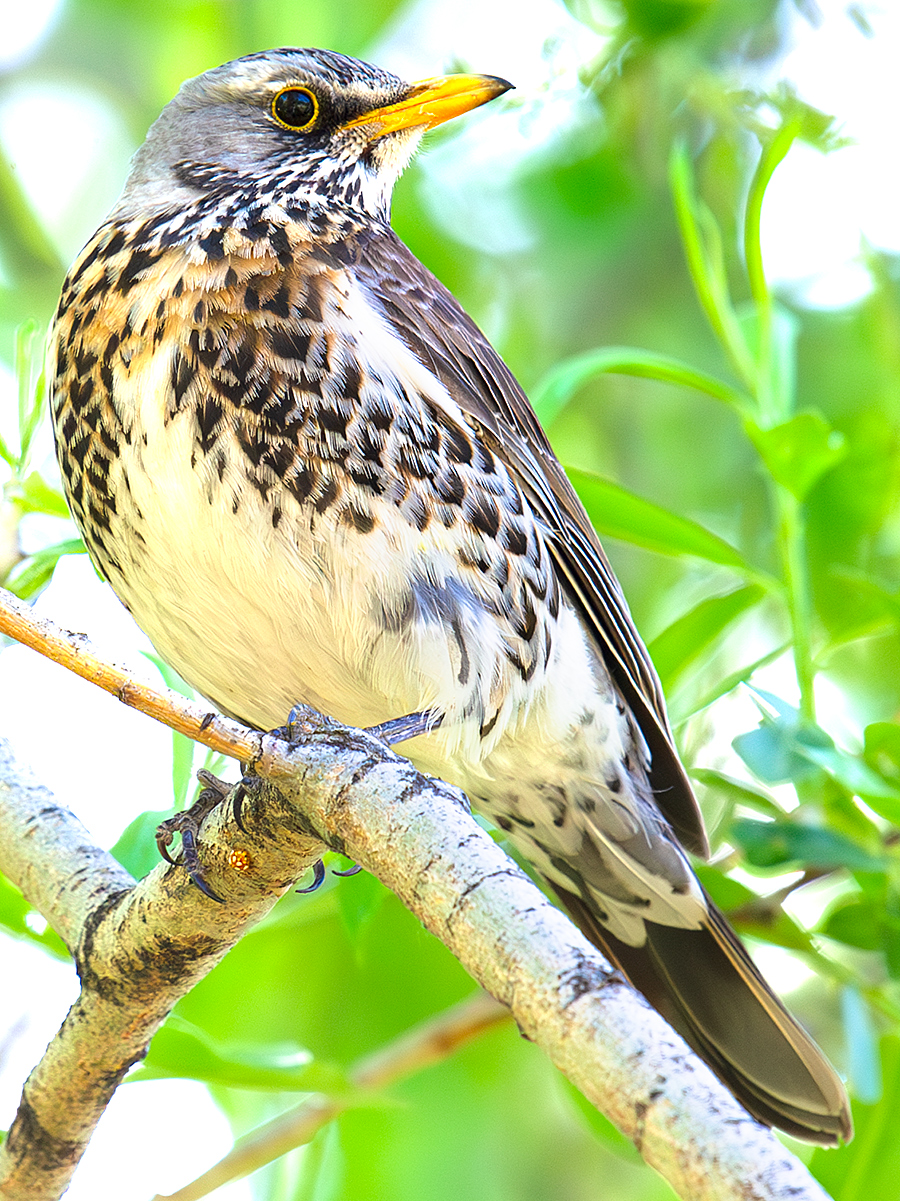



Extensive Eurasian range of Fieldfare Turdus pilaris extends to Tianshan, the Jungar Basin, and Altai Mountains in Xinjiang. Vagrant Gansu, Inner Mongolia, and Northeast China. HABITAT & BEHAVIOR Mixed woodland, often nesting in damp areas. In winter in more open, grassy areas, such as agricultural land and parks, where it may gather in large, noisy flocks. Colonial breeder, possibly as defense against attacks from crows; but may also nest alone. Aggressively defends winter feeding areas. Often stands erect; sometimes raises tail. Strong, undulating flight. ID Plump and large, with distinctive grey head and purplish-brown back. Combination of grey head and rump, black tail, and white underwing diagnostic. Underparts white with heavy arrowhead spots on flanks becoming streaking on breast and throat. Warm buffish wash on breast. White, short eyebrow and dark lores. In spring, male slightly brighter than female. Juvenile duller, with pale spots, but difficult to distinguish sex or age after first autumn. BARE PARTS Yellow bill with black tip. Feet brownish-grey. VOICE Song a loud series of chattering squeaks, interspersed with more melodious lines, often delivered in flight. Rattling alarm call. — Craig Brelsford
THE TRUE THRUSHES OF CHINA
shanghaibirding.com has research on all 24 species in the genus Turdus in China. Click any link:

Grey-backed Thrush Turdus hortulorum
Tickell’s Thrush T. unicolor
Black-breasted Thrush T. dissimilis
Japanese Thrush T. cardis
White-collared Blackbird T. albocinctus
Grey-winged Blackbird T. boulboul
Common Blackbird T. merula
Chinese Blackbird T. mandarinus
Tibetan Blackbird T. maximus
Chestnut Thrush T. rubrocanus
White-backed Thrush T. kessleri
Grey-sided Thrush T. feae
Eyebrowed Thrush T. obscurus
Pale Thrush T. pallidus
Brown-headed Thrush T. chrysolaus
Black-throated Thrush T. atrogularis
Red-throated Thrush T. ruficollis
Naumann’s Thrush T. naumanni
Dusky Thrush T. eunomus
Fieldfare T. pilaris
Redwing T. iliacus
Song Thrush T. philomelos
Chinese Thrush T. mupinensis
Mistle Thrush T. viscivorus
See also:
Taiwan Thrush Turdus niveiceps
ACKNOWLEDGEMENTS
Daniel Bengtsson served as chief ornithological consultant for Craig Brelsford’s Photographic Field Guide to the Birds of China, from which this species description is drawn.
